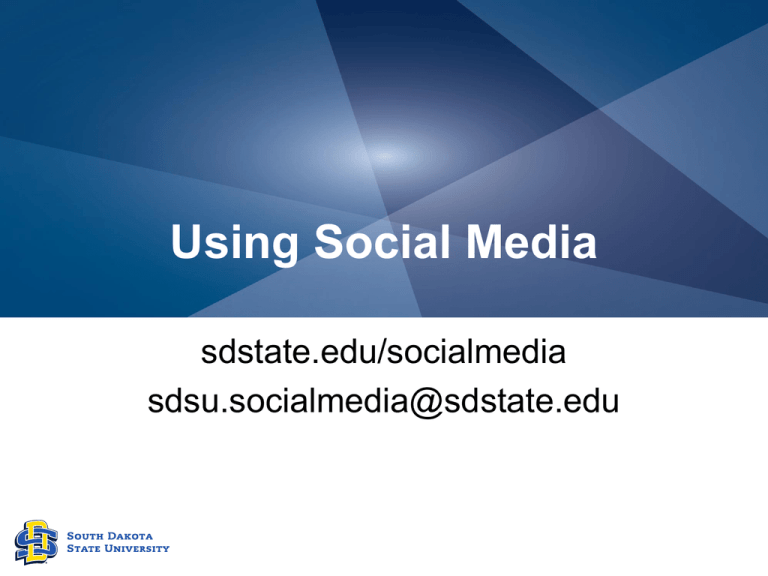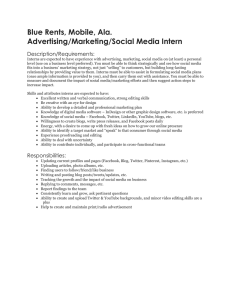Using Social Media sdstate.edu/socialmedia
advertisement

Using Social Media sdstate.edu/socialmedia sdsu.socialmedia@sdstate.edu About SDSU’s Social Media • University-wide social media accounts – Facebook – Twitter – Instagram – Snapchat – LinkedIn – Flickr – YouTube • Social media resources, guidelines, cover photos and avatars • Account directory Overall Goals • Promote SDSU accomplishments • Increase interaction and engagement with SDSU • Lead university-wide social media campaigns • Support social media efforts across campus Social Media Content • Think about your audiences and goals – Determine the best platforms • Research and post engaging content – Create new content – Re-share content • Monitor content and discussions • Analyze content and its effectiveness • Make changes for future posts How to determine your goals • Think about your ideal audience: – Prospective and current students – Alumni – Fans and stakeholders • Recruitment vs. awareness • Quality of engagement vs. quantity of followers Social Media Platforms Social media platform Facebook Percentage of 2014 high school seniors 75% Percentage of higher education institutions 99% YouTube 73% 82% Instagram 49% 53% Twitter 38% 90% Snapchat 37% 3% Engaging Content • Photos, videos, text and links • Informational content vs. emotional content • What makes content engaging? – Depends on your audience – Share a variety of different types of posts – Algorithms Engaging Students • Recruit prospective students by showing what current students do • Allow tagging on your posts to increase sharing and engagement • Utilize call to action features – Facebook: Add buttons to your Facebook page that allow users to contact you or go to the website – Twitter: Use the new Twitter Card feature Hashtags University Hashtags: #sdstate #gojacks #jackrabbitsforever #ilovesdstate (starts September 28) #sdstateabroad #ILookLikeAnEngineer Hashtag Campaigns • Annual, university-wide campaigns Summer Welcome Back | #newjacks15 Fall Homecoming | #hoboday Spring Graduation | #sdstate15 Monitor Conversations • Respond to questions and comments quickly whether they are positive or negative • Create saved searches on Twitter and get alerts with a hashtag or mention Analyzing Content It’s different for each network: • Reach • Engagement vs. Engagement Rate • Impressions • Views Analyzing Content • Peak times and peak engagement Social Media Content • Think about your audiences and goals – Determine the best platforms • Research content – Share content – Create new content • • • • Post engaging content Monitor content and discussions Analyze content and its effectiveness Make changes for future posts Questions? sdstate.edu/socialmedia sdsu.socialmedia@sdstate.edu


